Interactive Map
AUB Trees
Trees on campus date to the university's founding and come from all over the world. Behind each tree is a story.

-
Texas Mountain Laurel Dermatophyllum Secundiflorum
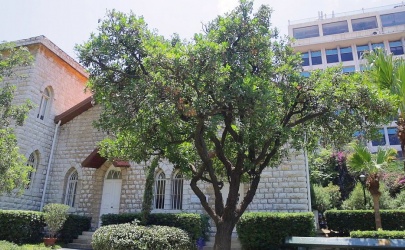
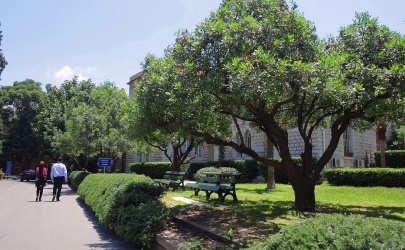
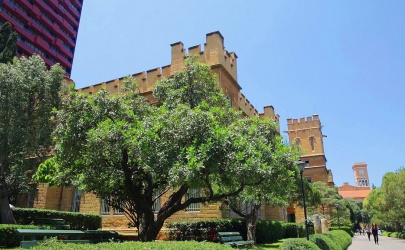
Texas mountain laurels were planted in the 1950s next to the Pharmacy Building. The small size and growth habit of this drought tolerant tree make it an ideal landscape tree, especially with its attractive purple flowers. The beans are reportedly used by native American tribes as a hallucinogen. -
Palestine Oak (Quercus Calliprinos Webb)
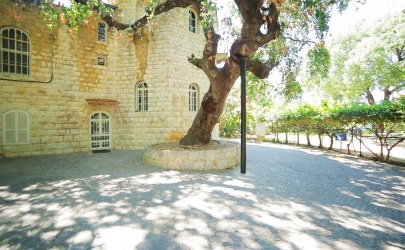
According to Professor West, the large prickly-leaved oak near the Observatory was already growing on site before the founding of AUB. Acorns were collected from this tree by West and the seedlings were planted throughout the campus mainly between the library and the chemistry laboratory. The tree is easy to differentiate by its leaves that have irregular, spiny edges. -
River Red Gum (Eucalyptus camaldulensis Dehnh)
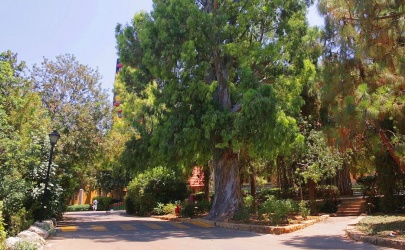
The large tree next to the Assembly hall was brought in 1911 in a biscuit tin from Jerusalem by AUB alumnus Henry Glocker and was planted A. Day. Extracts from the trunk, or leavews, are used to produce natural dyes ranging from yellow and orange through green, tan, chocolate and deep rust red. -
Jacaranda (Jacaranda Mimosifolia D.Don)
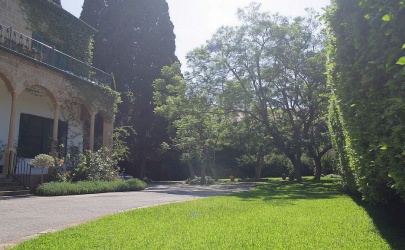
The tree, located inside Marquand House, was planted by AUB’s first President Daniel Bliss. This ornamental tree produces spectacular lavender blue blooms and is grown in urban areas worldwide. It is fast growing and re-sprouts easily if damaged. -
Silk Oak (Grevillea Robusta)
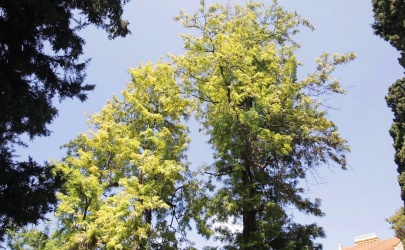
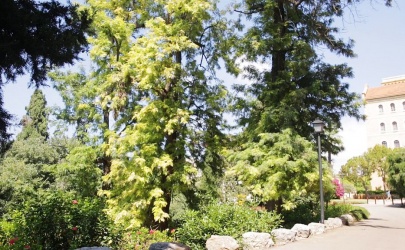
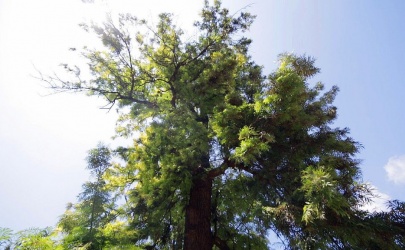
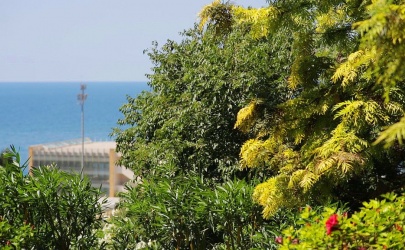
These trees were planted in 1931 by Mr. Serlis on the terraces facing Marquand House. In the spring, this large tree produces flowers that are rich in nectar, attracting birds and fruit bats. -
Carob Tree (Ceratonia siliqua)
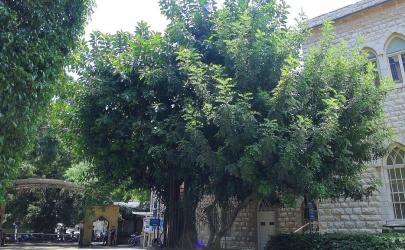
The oldest carob tree was planted around the 1880 next to the Old Pharmacy building. In 1964, the tree was cut down after a strong storm, but a branch has re-sprouted from the stump and the tree is still alive. The carob behind Jafet Library was also planted in 1880, it has survived road constructions and has been pruned to form a wall at the edge of the road. -
Flamboyant Tree (Delonix Regia)
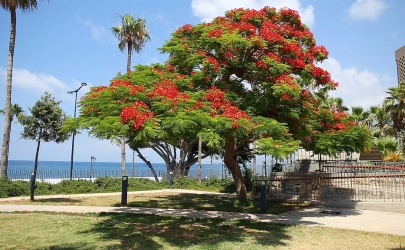
The tree specimen at the end of the green oval was planted by W. West. The tree drops its leaves in winter. Red flamboyant flowers appear in summer after the leaves come out. The tree is tolerant to drought, salty water, and urban pollution. When the green field was renovated, this tree was the only tree that survived. -
Sycamore Tree (Ficus Sycamorus)
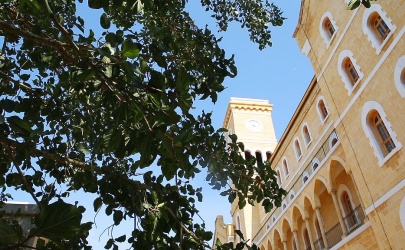
This is the only sycamore tree found in AUB, which is why it had to be replanted for preservation. There’s a popular street in Beirut named after this tree. Ficus sycomorus is native to Africa south of the Sahel and north of the Tropic of Capricorn, also excluding the central-west rainforest areas. -
Banyan Tree (Ficus Benghalensis)
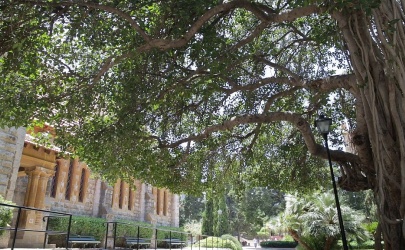
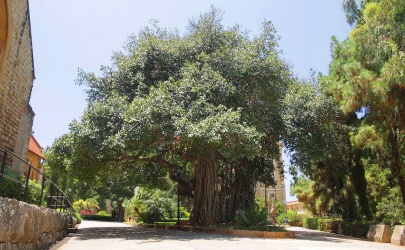
The Banyan trees of AUB are natural landmarks on campus. The late AUB professor of pharmacy, Charles Abou-Chaar, estimated that the trees were introduced to campus between 1873 and 1880 and planted next to Assembly Hall, West Hall, Jessup Hall, and the Observatory. The banyan tree was imported from India and is the national tree of that country.
